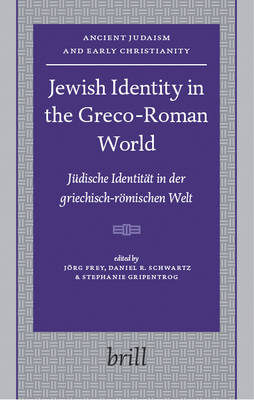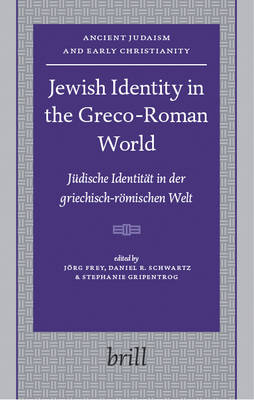
- Afhalen na 1 uur in een winkel met voorraad
- Gratis thuislevering in België vanaf € 30
- Ruim aanbod met 7 miljoen producten
- Afhalen na 1 uur in een winkel met voorraad
- Gratis thuislevering in België vanaf € 30
- Ruim aanbod met 7 miljoen producten
Zoeken
€ 337,45
+ 674 punten
Omschrijving
The articles discuss various aspects of Jewish identity in the Greco-Roman period. Was there a common 'Jewish' identity, and how could it be defined? How could different groups develop and maintain their identity within the challenge of Hellenistic and early Roman culture? What about the images of 'others'? How could some of those 'others' adopt a Jewish lifestyle or identity, whereas others, abandoned their inherited identity? Among the questions discussed are the translation of Ioudaios, Jewish and universal identity in Philo, the status of women and their conversion to Judaism, the participation of non-Jews in the temple cult, the practice of Emperor worship in Judaea, and the image of Egypt and the Nile as 'others' in Philo. Two articles enter the debate whether Jewish identity had an ongoing influence within early Christianity, in Paul and in the rules known as the Apostolic Decree.
Specificaties
Betrokkenen
- Auteur(s):
- Uitgeverij:
Inhoud
- Aantal bladzijden:
- 444
- Taal:
- Engels
- Reeks:
- Reeksnummer:
- nr. 71
Eigenschappen
- Productcode (EAN):
- 9789004158382
- Verschijningsdatum:
- 29/08/2007
- Uitvoering:
- Hardcover
- Formaat:
- Genaaid
- Afmetingen:
- 168 mm x 243 mm
- Gewicht:
- 943 g

Alleen bij Standaard Boekhandel
+ 674 punten op je klantenkaart van Standaard Boekhandel
Beoordelingen
We publiceren alleen reviews die voldoen aan de voorwaarden voor reviews. Bekijk onze voorwaarden voor reviews.








